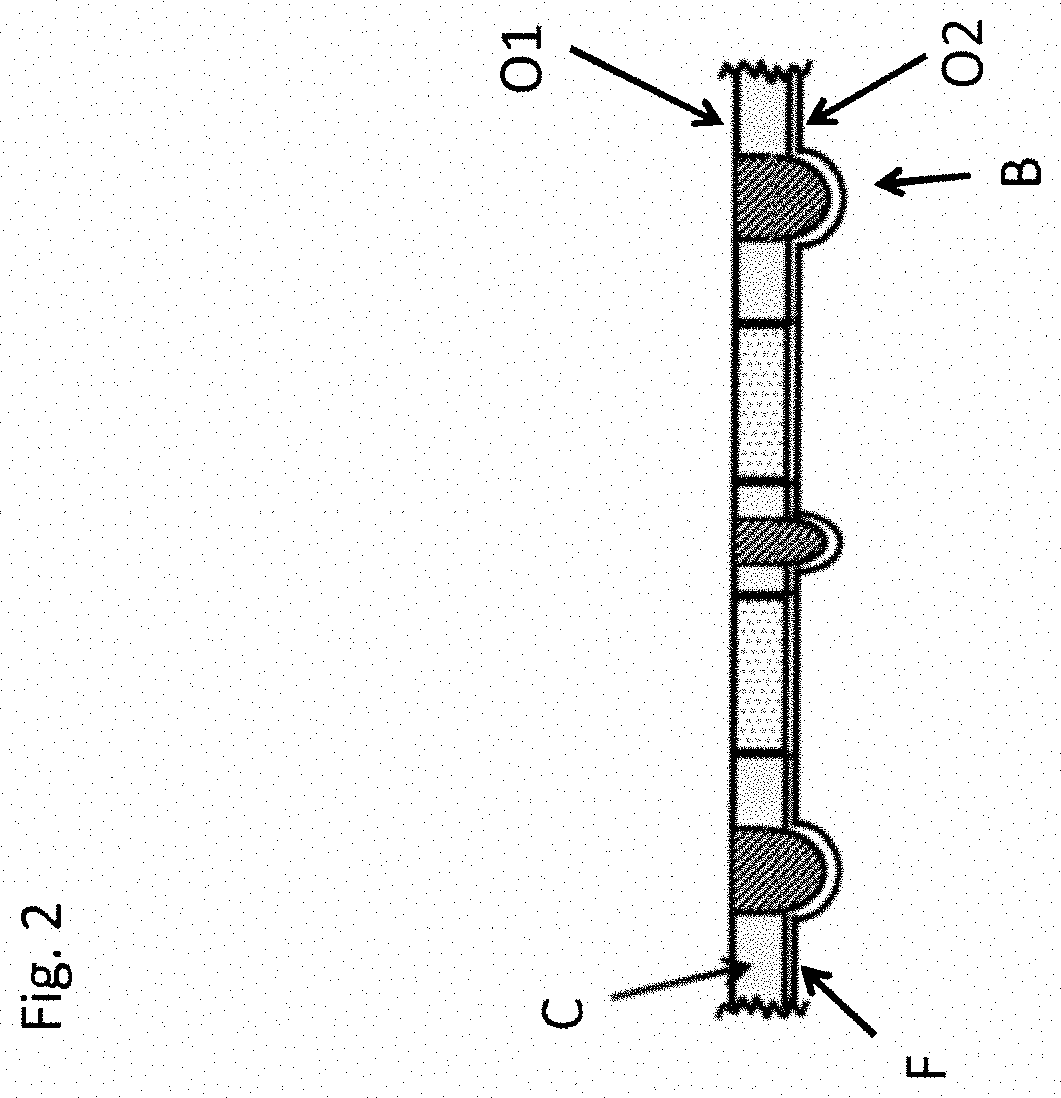Nonwoven laminate
a non-woven, laminate technology, applied in the field of non-woven laminates, can solve the problems affecting the effect of coarse mesh structure, and affecting the effect of conventional composites can absorb well and bind only low, so as to achieve the effect of sufficient mechanical strength and softness
- Summary
- Abstract
- Description
- Claims
- Application Information
AI Technical Summary
Benefits of technology
Problems solved by technology
Method used
Image
Examples
Embodiment Construction
[0025]According to FIG. 1, nonwoven laminate V has two different surfaces:[0026]Surface 01, which is largely planar and comprises regularly arranged perforations P that penetrate the nonwoven laminate and reach up to surface 02.[0027]Surface 02 which, in addition to perforations P, comprises elevations B rising from the surface and extending parallel to one another.
[0028]This creates channels on surface 02 that extend along surface 02 and are defined laterally by elevations B.
[0029]If, for example, a nonwoven laminate V according to the invention is used in a sanitary product, then surface 01 can be arranged facing the user. Surface 02 then faces the absorbent core.
[0030]Impinging liquids penetrate through perforations P into the texture. Depending on the viscosity, they are then distributed along the channels on surface 02 by way of two mechanisms:
[0031]a) Low viscosity liquids are transported due to capillary forces within elevations B,
[0032]b) Pasty liquids are transported pressu...
PUM
| Property | Measurement | Unit |
|---|---|---|
| aperture area | aaaaa | aaaaa |
| aperture area | aaaaa | aaaaa |
| elevations | aaaaa | aaaaa |
Abstract
Description
Claims
Application Information
 Login to View More
Login to View More - R&D
- Intellectual Property
- Life Sciences
- Materials
- Tech Scout
- Unparalleled Data Quality
- Higher Quality Content
- 60% Fewer Hallucinations
Browse by: Latest US Patents, China's latest patents, Technical Efficacy Thesaurus, Application Domain, Technology Topic, Popular Technical Reports.
© 2025 PatSnap. All rights reserved.Legal|Privacy policy|Modern Slavery Act Transparency Statement|Sitemap|About US| Contact US: help@patsnap.com



